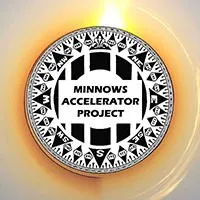Let me start with links to three important new articles related to Steem's economic system.
The problems that we believe should be solved are that of self-voting, passive delegation to bidbots (instead of participation in content discovery), spam (especially microspam), and abuse. These problems undermine one of the core unique value propositions of the platform; proof-of-brain. People generally gravitate towards what is the most profitable thing for them to do when there is monetary incentive.
The goal of these economic changes would be to move Steem closer to delivering on the promises stated in the whitepaper of unearthing high quality content by making it more profitable for people to actively curate, and less profitable to self-vote and delegate one’s Steem Power to bid bots.
Improving the Economics of Steem: A Community Proposal
And a slightly more technical post by @vandeberg: Reward Curve Deep Dive.
Also, Help Fix Steem's Economy!.
Yes, I know that @trafalgar's post is 7 month old, but at least we are finally going to discuss Steem's economic system.

Let me also link to my most recent post on these issues - a mere 4 months old. Just so I don't have to repeat everything and it links to articles that go even further back. I have also discussed one of my proposals with a person now a former employee of Steemit Inc; although it wasn't developed further it was useful in understanding the kinds of code changes which might be acceptable - compared to those that probably won't be.
The discussion is now known as the “Economic Improvement Proposal” or “EIP”. There seems to be an eternal recurrence on Steem whereby anything "under discussion" has already been decided. The only "proposal" is, for now, the one outlined by @trafalgar. There really needs to be a deep-think (proof of thinking) about the relationships between the encoded system and human behaviour. Changing the most obvious parameters every few months (proof of tinkering) will not fundamentally change the economy. The whole discussion will be more open if called the "Economic Improvement Project".
The first question that needs to be asked is: which aspects of the Steem economy do we wish to optimise?
Without knowing the parameters for success, how can we measure such success?
This is not the same question as, "Which behaviour do we want to suppress?" They are related, but not the same point of view. As has been quoted numerous times from game theory, bad behaviour can never be eradicated but it can be minimised. The nature of good and bad behaviour is in relation to whether it promotes or hinders the economy towards some optimal state. Without knowing what that optimal state might be there is not even a metric for deciding on what constitutes bad behaviour. Is it even possible to label as "bad behaviour" something that is allowed on the blockchain?
Steem is a blockchain; it runs on code. It doesn't care about your aims or ambitions or feelings, it merely processes inputs. Humans, on the other hand, express their encoding through feelings and try to articulate them through words. In order to even answer the key question, we need a map of the whole Steem economy and to be able to pinpoint the parts of the code that need to be changed to align an optimised economy with a satisfied social structure - and happy people.
Perhaps the existing parameters are just not enough. Perhaps new code is needed. We won't know until we try.
This is not easy. No blockchain has done this - none!
Do we want an economic system that is able to run in a truly autonomous and decentralised manner?
Do we want an economic system where the encoded rules are aligned with the social aims?
If the answers are "Yes" then we need to open the Steem engine to scrutiny.
I am glad that Steemit Inc has started that process.
 - -
- -  - -
- -Please Comment, Resteem and Upvote. Thanks!
@rycharde manages the AAKOM project and the MAP Rewarder & Curators Trail.